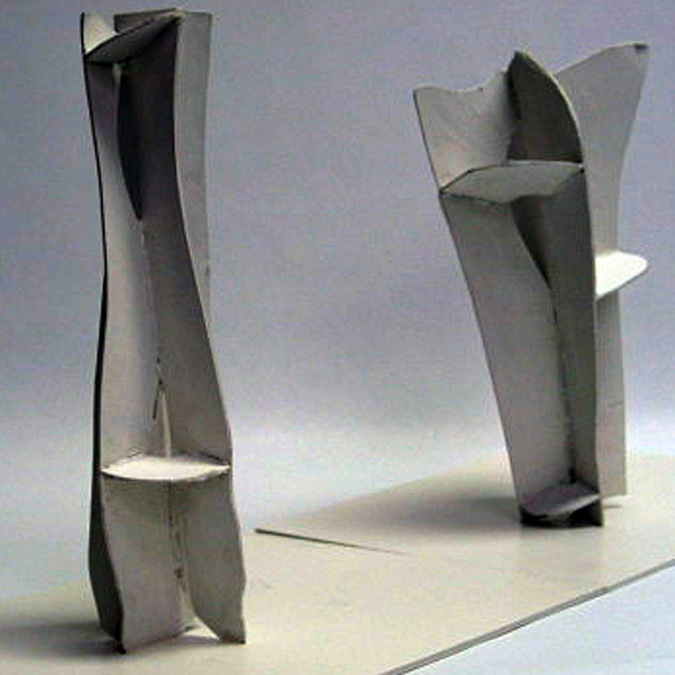
April 29, 2003 — When the University Medical Center Light Rail Transit (LRT) Line opens next fall, riders will be greeted by artwork created by University of Utah students. Intended to complement each of the three light rail stations, the sculptures grew out of the Utah Transit Authority’s (UTA) Art in Transit program.
Proposals were solicited from the entire University of Utah student body. Winning proposals came from Yoshikazu Kono, a graduate student in architecture; Cody Dingus and James Nielsen, both design and architecture students; and J. Bernie Johnson, an art and art education student. Currently, the student artists are finalizing the scope of their commissions.
Thomas Christensen, project manager for the U’s Campus Design and Construction says, “Because this line was at the University, we determined it would be appropriate to use student art to add a focus of interest.”
“The enthusiasm of the U of U students has made the University Line a huge success,” says Brandon Bott, UTA PR Specialist and Art in Transit Coordinator. “We are excited to see students express their energy and talent through their art.”
Kono’s 12-foot steel sculptures will be installed at the University Medical Center station, located at 10 N. Medical Dr. The pieces communicate the elegance of line and plane found within the human skeletal structure. The two forms are abstractions of the human humerus, radius and ulna, which give the human arm mobility and strength.
“The human shape-we use it every day. People use TRAX every day,” states Kono. ” So I wanted to emphasize this. I wanted my art to make the station look unique. Art is better than advertisements.”
Dingus’ and Nielsen’s work will be displayed at the Ft. Douglas station, 200 S. Wasatch Dr. Two four-foot-square cubes, constructed from stainless steel and sandstone, incorporate etched and raised text that denotes Ft. Douglas’ history and the anticipation of a bright future that education brings.
Johnson’s sculpture, located at the University South Campus station, 1790 E. South Campus Drive-one of the gateways to the campus-will be constructed out of durable, mild steel. The artwork will make a conceptual tie to its location, a diverse part of the University, which includes the business loop, Huntsman Center and LDS Institute of Religion. Through the exploration and interplay of form and color the work creates a visually interesting spatial illusion.
The total cost for the three projects is about $60,000, with $27,000 of it donated by the Associated Students of the University of Utah (ASUU.) Each artwork commission includes $16,550 for costs of materials, fabrication and installation and a UTA-funded $2,250 stipend. Students were encouraged to find inspiration for their work through researching the history and culture of the communities near each station location. A seven-member Art Design Board representing the University of Utah, the Associated Students of the University of Utah and UTA selected the winning artists.
Daily ridership on the University Line has doubled projections. “From the feedback we’re getting, the ridership for the Medical Center extension line will also exceed our expectations,” Christensen says.
